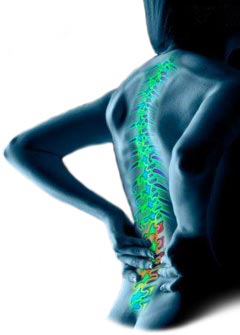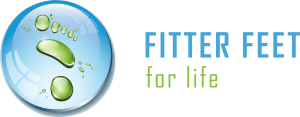Osteopathy: Back Pain
Lower back pain has reached epidemic proportions in the western world. Research shows that 60% of the UK's population will suffer from it at some stage during their lives.
Back pain responds well to osteopathic treatment – reducing pain and restoring mobility and quality of life.
What is osteopathy?
- Osteopathy recognises that much of the pain and disability we suffer stems from abnormalities in our body's structure and function.
- Osteopaths diagnose and treat problems with muscles, ligaments, nerves and joints to help the body's natural healing ability.
- Treatment involves gentle, manual techniques – easing pain, reducing swelling and improving mobility. Often, this involves manipulation which can result in an audible ‘crack' which is simply the sound of gas bubbles popping in the fluid of the joints.
- Osteopathy does not involve the use of drugs or surgery.
The scourge of back pain
- Lower back pain now affects two-thirds of the adult population of the UK; it is the nation's leading cause of disability.
- Four out of five people will suffer back pain lasting more than a day at some point in their lives.
- Over £480 million a year is spent on services used by sufferers of back pain, including 14 million GP consultations, seven million therapy sessions and 800,000 hospital beds.
- Back pain is very common in children. Around 50% of children in Europe experience back pain at some time.
- Back problems and repetitive strain injuries cost British industry £5 billion each year.
- Doctors write 55 million prescriptions for painkillers each year.
Back pain – causes and effects

The trouble with back pain is that it can do more than just give you a pain in the back. It can create difficulties with walking, sitting, bending and lifting and can even lead to depression and incontinence. It can also be the cause of pain in the buttocks, groin or legs (commonly called sciatica), in the head, neck, shoulders and arms. It can also be one of the effects of hip, knee and foot problems. Back pain can result from bad posture, a sudden jerky movement, a lumpy mattress or poor lifting techniques. It can also be caused by injury in a work place, by a sports accident or by muscular spasms. It often occurs during pregnancy or, because of decreased flexibility, as people get older.
There are also many diseases and pathological conditions that can lead to back pain. These include abdominal or pelvic disease, anxiety, arthritis, cervical or lumbar spondylosis, dermatological problems, kidney disease, rheumatic conditions, tumours and scoliosis.
Our modern, sedentary lifestyles have a profound effect on the development of back pain; indeed one of the most effective ways of preventing it is simply to stay active. An average adult in the UK spends at least two hours a day in front of a computer screen or television set, and back problems can be triggered if they don't sit properly. In an age of mobile phones and computer games, such troubles are increasingly inflicting children of school age as well.
Osteopathy and the treatment of back pain
Osteopathic treatment is often the most effective first line of attack in correcting problems caused by back pain. Speedy access to osteopathic care for acute patients often averts the possibility of conditions becoming chronic.
By correcting any underlying mechanical disturbances in the musculo-skeletal system, osteopaths can greatly relieve pain and distress, minimise dependency on drugs and slash the cost of treatment for side effects.
Osteopathic treatment often negates the need for further medical investigation or surgery, although osteopaths are skilled in diagnosing problems that require such investigation or treatment.
Back problems account for over 50% of the cases osteopaths see.
Visiting an osteopath
On your first visit, and before examination begins, the osteopath will discuss and record your medical history in detail. You will then normally be asked to remove some of your clothing so that a series of observations and biomechanical assessments can be made.
The osteopath will then apply a highly developed sense of touch to identify points of weakness or excessive strain throughout the body. Further investigations may include an x-ray or blood test. This will allow a full diagnosis of the problem and will enable the osteopath to tailor a treatment plan to your needs.
Your osteopath should make you feel at ease and tell you what is happening throughout your consultation. You should ask questions if you have any concerns. If further medical treatment is needed the osteopath may contact your doctor, with your permission.
How much does osteopathy cost?
You do not need a referral from a GP to see an osteopath. The majority of osteopaths work in private practice, so you may choose to approach a practitioner directly and pay for treatment. Fees range from £25 to £50 and above for a single session, depending upon the location of the practice and experience of the osteopath. Typically between two and six treatment sessions are needed, though this varies according to the severity of the problem.
An increasing number of osteopaths work alongside GPs, so it may be possible for your doctor to refer you to an osteopath on the NHS. It may also be possible to claim for a course of osteopathy if you have private health insurance policy. Check with your insurance provider to confirm the available level of cover and to find out whether you require a referral from a GP or specialist. All insurance companies have help lines to explain your benefits and methods of claiming.
Ten top tips for back care
1. For back pain, better to see your osteopath sooner than later.
2. Take regular exercise – your osteopath can say what's right for you.
3. Hours in one position can cause problems – avoid computer ‘hump'.
4. During repetitive tasks, vary your rhythm and take frequent breaks.
5. Adjust car seats and on long journeys, take regular breaks to stretch.
6. Pace yourself with heavy work such as gardening – don't risk a disc!
7. Watch children's posture – they shouldn't carry bags on one shoulder or spend too long at a computer without breaks.
8. During pregnancy, osteopathy can help your body adjust to changes.
9. Avoid strain when lifting, particularly small children and shopping.
10. Your bed could be part of the problem. Seek osteopathic advice on choosing a new bed.
Osteopaths are statutorily regulated health professionals forming an integral part of primary care teams.
What is the General Osteopathic Council?
The General Osteopathic Council (GOsC) was established under the Osteopaths Act 1993 to regulate, promote and develop the osteopathic profession in the UK, maintaining a Statutory Register of those entitled to practice osteopathy.
Education and Training
Osteopathic training is demanding and lengthy, and a recognised qualification is only available from osteopathic educational institutions accredited by the GOsC.
Trainee osteopaths study anatomy, physiology, pathology, biomechanics and clinical methods during a four or five year honours degree programme. Such wide-ranging medical training gives osteopaths the skills to diagnose conditions when osteopathic treatment is not advisable, and the patient must be referred to a GP for further investigation. Osteopaths are committed to a programme of Continuing Professional Development.
What do osteopaths treat?
Osteopaths treat a wide range of patients and conditions:
- Half suffer low back trouble - Most back pains result from mechanical disturbances of the spine – postural strains, joint derangements and spinal disc injuries. Osteopathy, with its comprehensive approach to healthcare, is a particularly successful approach to treatment.
- Over half are women - Many women are working mothers and combining both aspects of their lives can give rise to problems from the perennial headache to debilitating musculo-skeletal disorders. Many headaches originate from stiffness and tension in the neck and osteopathic treatment can often bring relief. Pregnancy can put a strain on the whole spine and osteopathic treatment can help the body adapt to the many changes it experiences.
- A quarter are in the forties - Many patients are losing fitness at this stage in their lives and are more prone to injury. Osteopaths consider the whole person, examining posture and the strength and flexibility of muscles, ligaments and tendons. Treatment is designed to alleviate current problems and to help prevent recurrences.
- Many are elderly - Pain-killers are not the only solution for the aches and pains associated with aging. For more permanent relief it is necessary to eliminate the underlying causes of pain, a job for which the osteopath is specifically trained. Osteopathy can also help to reduce pain and stiffness in the less acute stages of arthritis.
- Many problems relate to work - Work, whether at a computer terminal or in heavy industry, can give rise to disorders of muscles, tendons and joints, particularly in the back, hands and arms. Osteopaths treat many conditions related to the workplace and can give remedial advice and preventative exercise.



